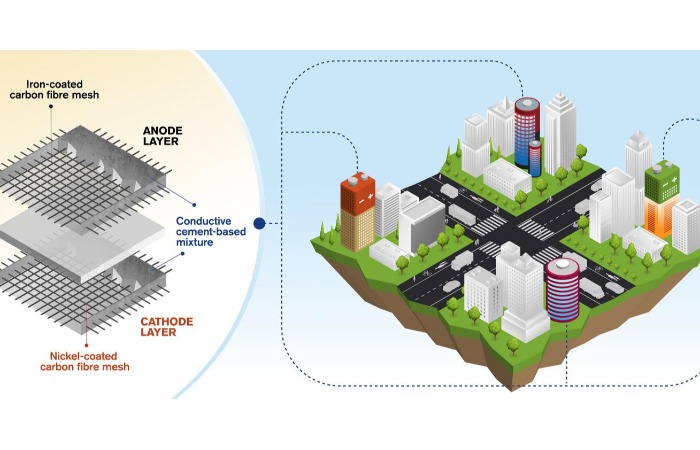
Buildings to store energy using innovative concrete-based battery
Sweden's battery research by scientists focused on making batteries that can both store energy and serve as structural components for buildings.
The team demonstrated a novel cement-based battery that could allow for the construction of large structures made of functional concrete.
The study was carried out at the Chalmers University of Technology, where researchers were working on developing more environmentally friendly building materials, with a focus on concrete, the world's most widely used and energy-intensive material.
This novel concept is based on previous concrete-based battery designs that, according to the researchers, performed poorly in tests. They developed the rechargeable design, which they describe as a world-first concept, after much experimentation, and it appears to be promising.
The team's battery begins with a cement-based mixture that is similar to regular concrete but contains small amounts of short carbon fibres for flexural strength and conductivity. Two carbon fibre meshes, one coated in nickel to act as the battery's cathode and the other covered in iron to act as the anode, are also included in the mix. These transport electrons back and forth as the device is charged and discharged, acting as the battery's electrodes.
According to the team, the concrete-based battery has a 7Wh per square metre of material energy density, which is over ten-fold higher than previous concrete-based batteries. However, it is still far less powerful than commercial batteries, but because it is made of concrete, which can be scaled up to form massive structures, it may be able to compensate for this.


 +91-22-24193000
+91-22-24193000 Subscriber@ASAPPinfoGlobal.com
Subscriber@ASAPPinfoGlobal.com